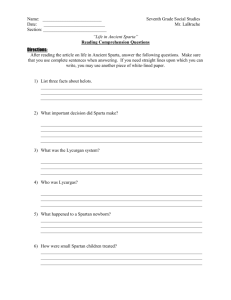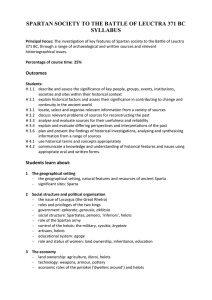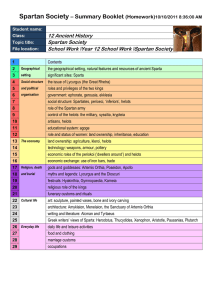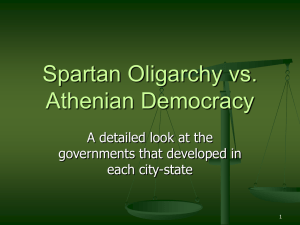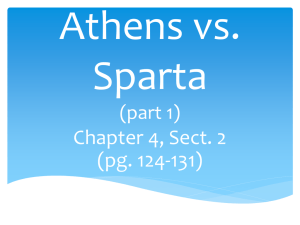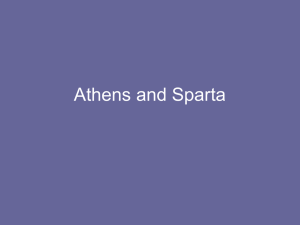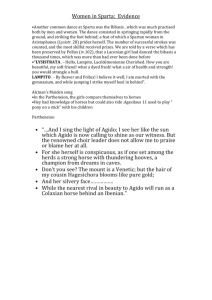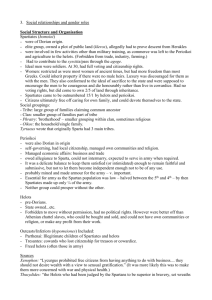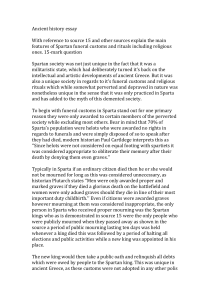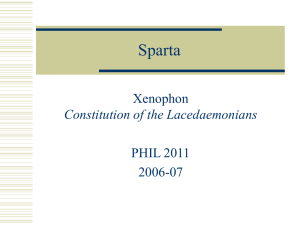Areas of study:
advertisement
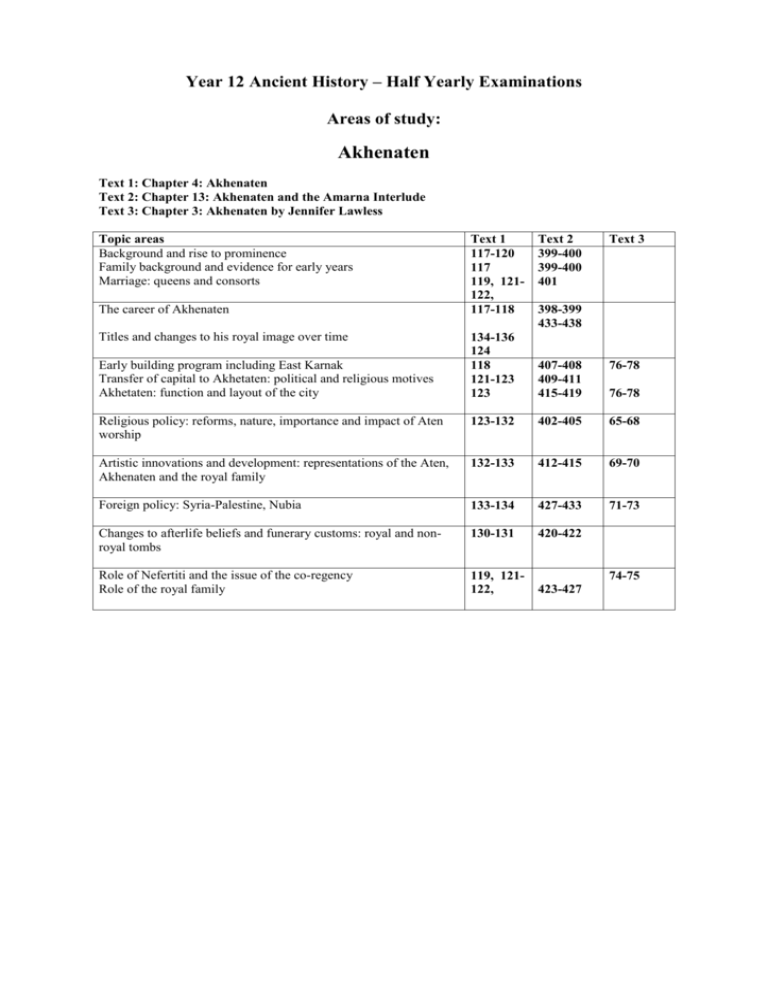
Year 12 Ancient History – Half Yearly Examinations Areas of study: Akhenaten Text 1: Chapter 4: Akhenaten Text 2: Chapter 13: Akhenaten and the Amarna Interlude Text 3: Chapter 3: Akhenaten by Jennifer Lawless Topic areas Background and rise to prominence Family background and evidence for early years Marriage: queens and consorts The career of Akhenaten Titles and changes to his royal image over time Text 1 117-120 117 119, 121122, 117-118 Text 2 399-400 399-400 401 Text 3 398-399 433-438 134-136 124 118 121-123 123 407-408 409-411 415-419 76-78 Religious policy: reforms, nature, importance and impact of Aten worship 123-132 402-405 65-68 Artistic innovations and development: representations of the Aten, Akhenaten and the royal family 132-133 412-415 69-70 Foreign policy: Syria-Palestine, Nubia 133-134 427-433 71-73 Changes to afterlife beliefs and funerary customs: royal and nonroyal tombs 130-131 420-422 Role of Nefertiti and the issue of the co-regency Role of the royal family 119, 121122, 423-427 Early building program including East Karnak Transfer of capital to Akhetaten: political and religious motives Akhetaten: function and layout of the city 76-78 74-75 Sparta Text 1: Chapter 2: Spartan society to the Battle of Leuctra 371 BC Text 2: Part 4: Spartan Society by Kathryn Welch Text 3: Sparta by Robin Barrow Topic areas The geographical setting – the geographical setting, natural features and resources of ancient Sparta – significant sites: Sparta 2 Social structure and political organisation – the issue of Lycurgus (the Great Rhetra) – roles and privileges of the two kings – government: ephorate, gerousia, ekklesia – social structure: Spartiates, perioeci, ‘inferiors’, helots – – – – – role of the Spartan army control of the helots: the military, syssitia, krypteia artisans, helots educational system: agoge role and status of women: land ownership, inheritance, education 3 The economy – land ownership: agriculture, kleroi, helots – technology: weapons, armour, pottery – economic roles of the periokoi (‘dwellers around’) and helots – economic exchange: use of iron bars, trade 4 Religion, death and burial – gods and goddesses: Artemis Orthia, Poseidon, Apollo – myths and legends: Lycurgus and the Dioscuri – – – festivals: Hyakinthia, Gymnopaedia, Karneia religious role of the kings funerary customs and rituals 5 Cultural life – art: sculpture, painted vases, bone and ivory carving – architecture: Amyklaion, Menelaion, the Sanctuary of Artemis Orthia – writing and literature: Alcman and Tyrtaeus – Greek writers’ views of Sparta: Herodotus, Thucydides, Xenophon, Aristotle, Pausanias, Plutarch 6 Everyday life – daily life and leisure activities – food and clothing – marriage customs – occupations. Text 1 Text 2 44-45 155-156 Text 3 Ch 2 47 61-62 62-64 47-49, 51-55 73-75 49, 54 65-66 50-51 55-61 48-49 73-75, 65 52-53 168-171 168-171 174-175 177-179 180-183 172-173 Ch 7 Ch 7 Ch 3, 4 Ch 5 PP 42-44 184-187 198-200 67-73 67-68 69 68-69 61-62 72 157-161 162-164 165-167 157-158 159-161 Ch 6 70-71 70-71 191-194 67 204-205 153-154 64-67 188-190 195-197 Remember the Chapter from the book edited by Dianne Hennesy…. Chapter on Sparta written by Jane and Bruce Dennett. Human Society and its Environment Year 12 Ancient History Assessment Task 3 Half Yearly Examination Topic: Ancient History Higher School Certificate Course. Due date: Weighting: Term II, Week 2. Wednesday .May 2nd 2007. Week 2: Week B Class 1: Periods 1 and 2 Class 2: Periods 3 and 4 (This class will be quarantined during recess) 15/100 (Examination assessment component) Principal Focus: Ancient History Higher School Certificate Course to date. Assessment Statements: A student develops knowledge and understanding about: Timing Details Assessment Criteria: people, places, societies and events in the context of their times change and continuity over time the process of historical inquiry communicating an understanding of history This external examination provides a measure of student achievement in a range of syllabus outcomes that can be reliably measured in an examination setting. Marking is based upon fluent responses and an oral presentation that together demonstrate a knowledge and skills in the following areas: Presenting findings of investigations, analysing and synthesising information from a range of sources both presented in th examination and drawn from the knowledge of the student Communicating a knowledge and understanding of relevant developments and issues that shape the historical period, society or personality, using appropriate oral and written forms Locating, selecting and organising relevant information form a variety of sources to investigate key developments, forces and issues of the historical period, society or personality Describing and assessing significant developments, forces and issues that shaped the historical period, society or personality Explaining the implications of relevant problems of evidence for reconstructing the history of the period, society or personality Analysing and evaluating relevant sources for their usefulness and reliability Explaining and evaluating differing perspectives and interpretations of the historical period, society or personality. Task Description: Duration: 2 hours Reading time: 5 minutes. Section I: Ancient Societies (25 marks) Candidates must attempt ONE question (Spartan society to the Battle of Leuctra 371 BC) Each question will consist of four or five parts. A source will be provided for this question. Section II: Personalities in Their Times Candidates must attempt TWO questions. (Egypt: Akhenaten)(25 marks each) All questions will be in two or three parts, with the last part of the question worth 15 marks. (25 marks each – 50 marks in all)
